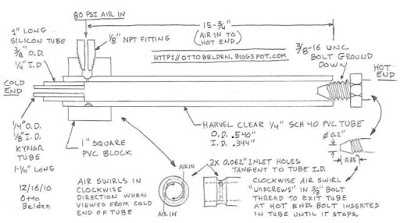This post is a very simple explanation of Position as used in Geometric Dimensioning and Tolerancing. Why am I writing about Position? One of the most frequent questions people ask me regarding Geometric Dimensioning and Tolerancing is "what does that target bulls-eye symbol mean". That bulls-eye symbol is called Position and it seems to be the most confusing and mysterious symbols in GD&T for some people. Before I talk about Position you should go back and read - or read if you haven't read already - THIS post that I wrote about tolerances and size and maybe even THIS post I wrote awhile back. There is nothing really mysterious or even complicated about the concept of Position and how it's used with Basic Dimensions in GD&T. The application can get pretty scary and complicated sometimes but the concept is pretty straight forward. I'm going to try and explain it in a overly simple way and later tie all these Design Related posts together as I write more of them.
Square Tolerance Zones
The first thing that is important to point out is that Geometric Dimensioning and Tolerancing is all about the dimensions tolerances so I'm going to compare the 'traditional' method of tolerancing to Position as a starting point. So to start with have a look at a 'traditional' drawing below that uses linear coordinate dimensions. On a 'traditional' drawing that is using linear dimensions the tolerances are put on each of the dimensions either directly as in the picture below or in the title block (or notes) on the drawing. Have a look at the below drawings 2A and 2B that are dimensioned 'traditionally' with the tolerances on the dimensions themselves. I have left the dimensions of the block itself off the drawing for clarity.
 |
| Linear Dimensions with a Square Tolerance Zone |
In the top view of the above picture (2A above) there is a rectangular block and a couple of dimensions to a point near the middle. Imagine that you want to drill a hole 1.5 inches from the left side and 1 inch from the top as the dimensions show. Note that each dimension has a tolerance of +/-.25 inches so to get the hole in the right spot you first measure down from the top of the block 1 inch +/- .25 inches, giving you a total tolerance of .50 inches. Same thing with the other dimension, measure from the left 1.50 inches +/-.25 inches - again giving you a total tolerance of .5 inches. To get the hole in the right spot according to the dimensions (and the tolerances) you would have to drill the hole so that the center of the hole was somewhere inside that .5 inch square tolerance zone. Does that make sense? It seems strange if you think about it that a round hole would be positioned in a square tolerance zone doesn't it? Read more and this will start to make sense...


